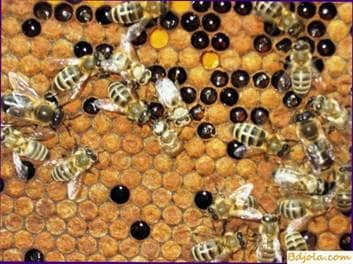
Reserve apiary is necessary to provide bees with saturated pollination of greenhouse crops. A significant role in this is the quality of the queens bred on the reserve apiary. The strength and productivity of the family depends on the uterus. Only strong families, even under unfavorable weather, manage to provide themselves with fodder and saturated, uninterruptedly pollinate crops in greenhouses.
To successfully work with bees, you need to know well the local climatic conditions, the number of honey-plants and the timing of their flowering. Use honey beans so that bee colonies develop well and be strong all year round.
In the last century a well-known propagandist of rational beekeeping put forward the proposition: “in the strong families, all salvation.” This situation is especially true for greenhouse beekeeping.
Белковые корма для пчел. Помидоры не опыляются.
Hothouse beekeeping